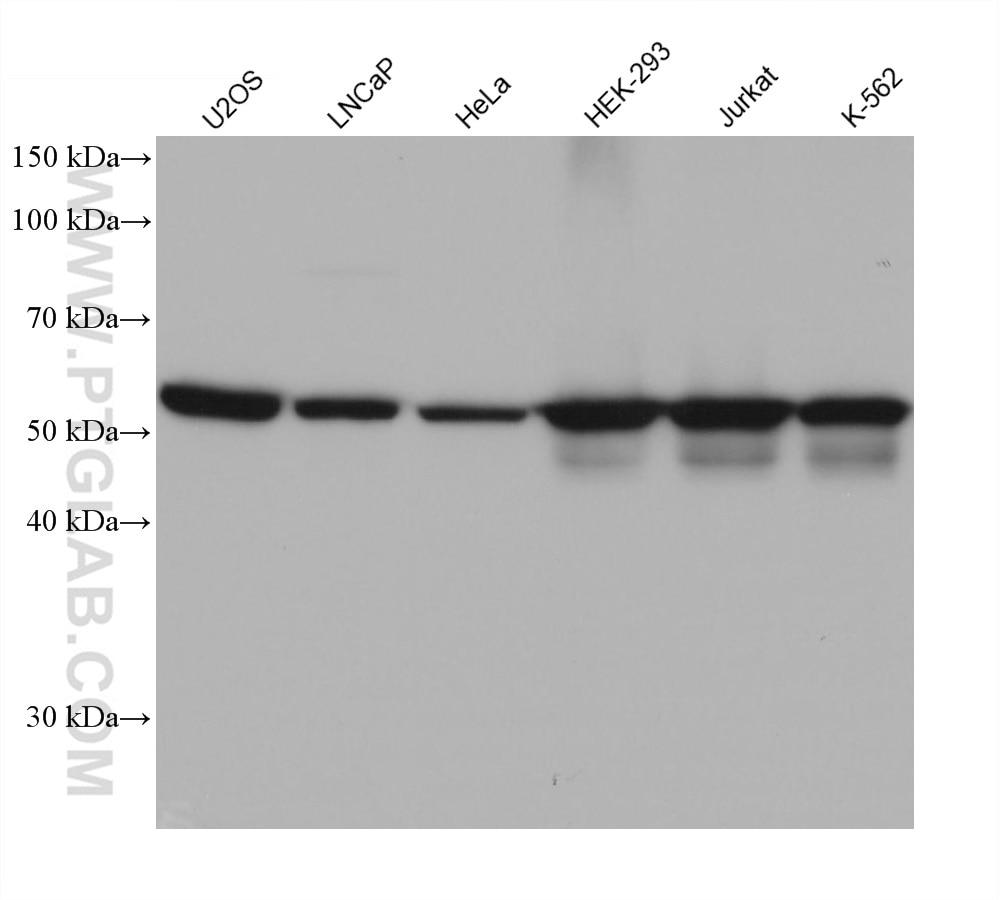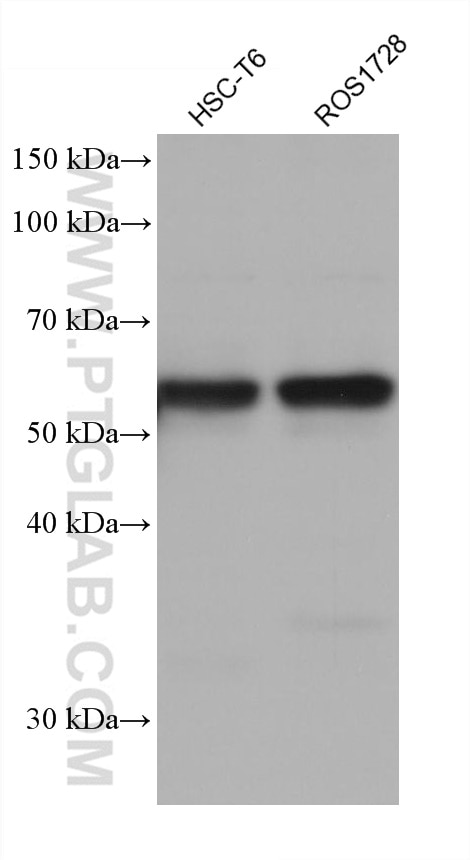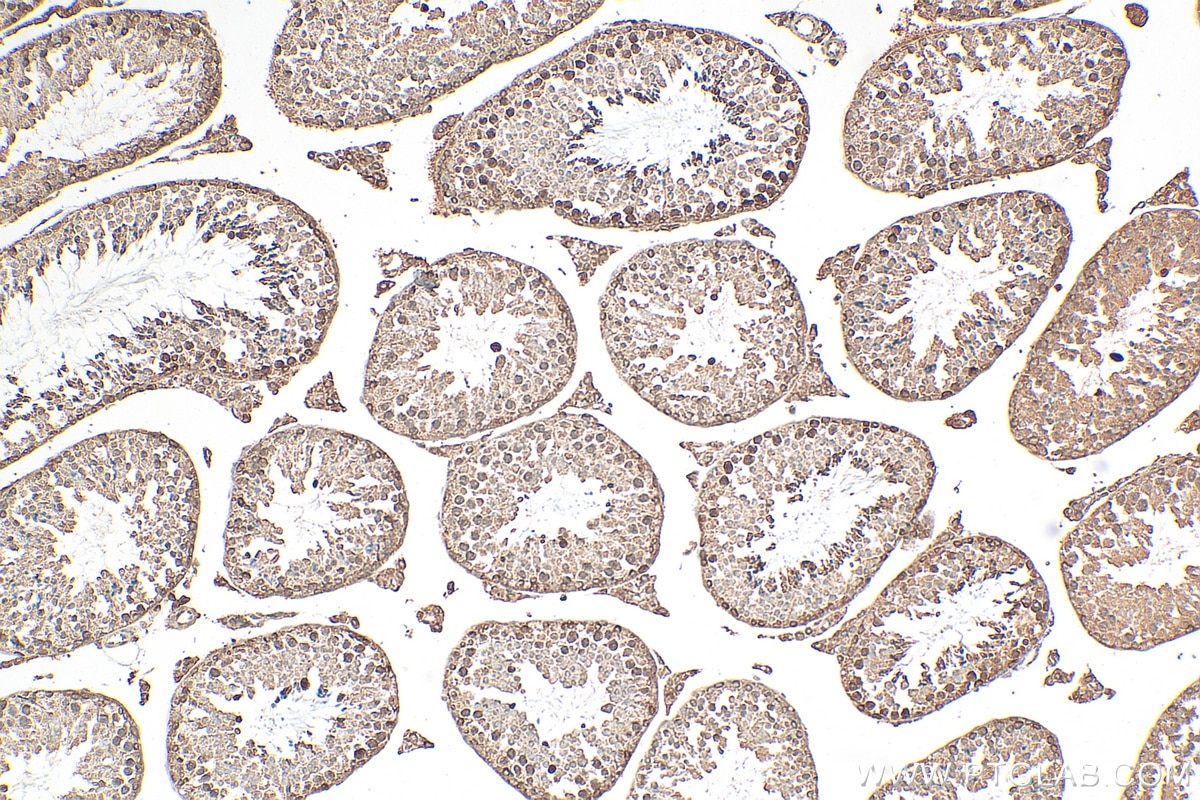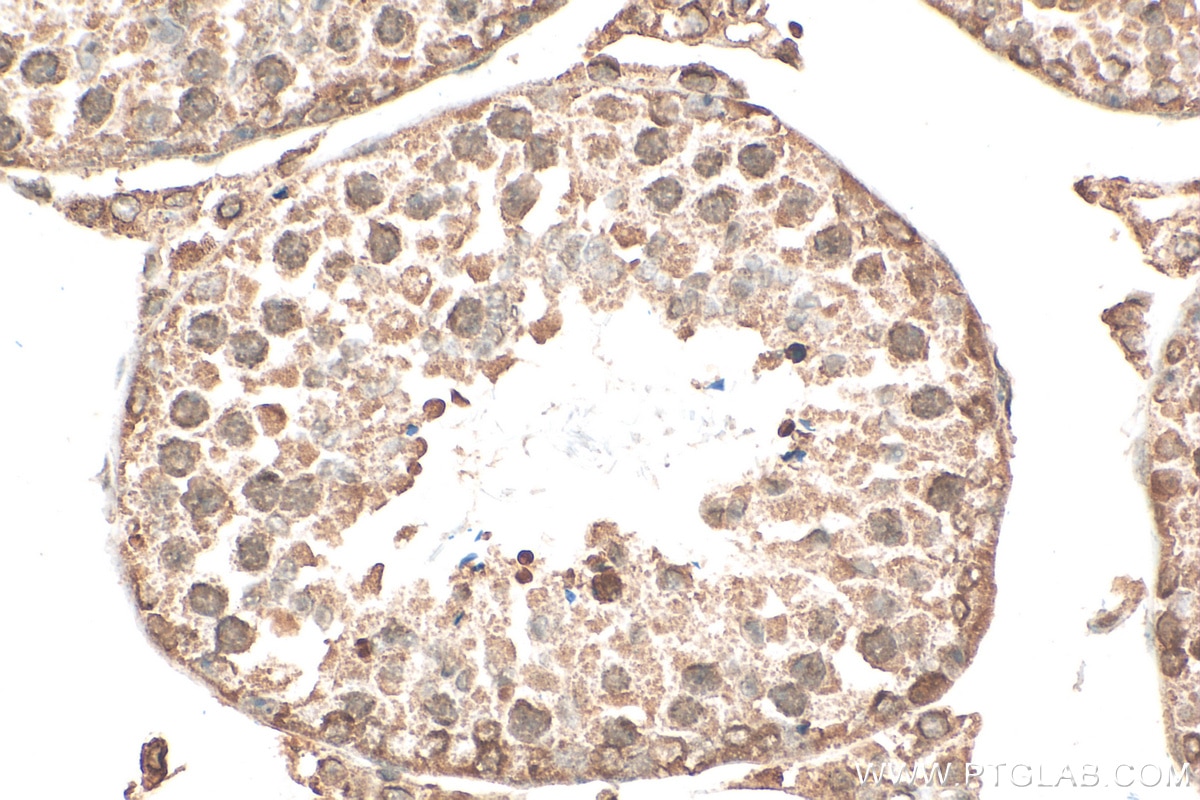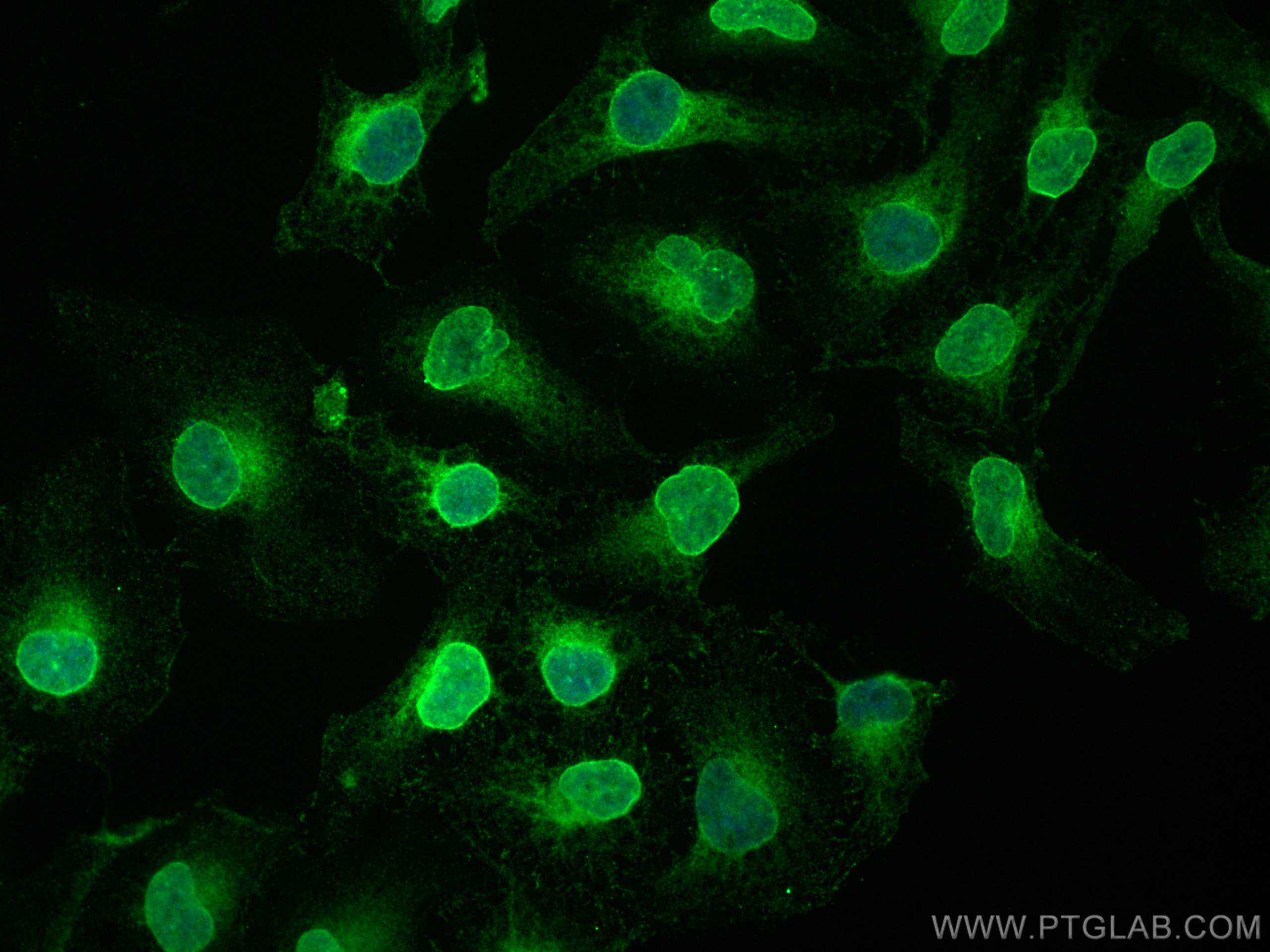Tested Applications
| Positive WB detected in | U2OS cells, HSC-T6 cells, LNCaP cells, HeLa cells, HEK-293 cells, Jurkat cells, K-562 cells, ROS1728 cells |
| Positive IHC detected in | mouse testis tissue Note: suggested antigen retrieval with TE buffer pH 9.0; (*) Alternatively, antigen retrieval may be performed with citrate buffer pH 6.0 |
| Positive IF/ICC detected in | HeLa cells |
Recommended dilution
| Application | Dilution |
|---|---|
| Western Blot (WB) | WB : 1:5000-1:50000 |
| Immunohistochemistry (IHC) | IHC : 1:500-1:2000 |
| Immunofluorescence (IF)/ICC | IF/ICC : 1:500-1:2000 |
| It is recommended that this reagent should be titrated in each testing system to obtain optimal results. | |
| Sample-dependent, Check data in validation data gallery. | |
Product Information
68378-1-Ig targets LBR in WB, IHC, IF/ICC, ELISA applications and shows reactivity with human, mouse, rat samples.
| Tested Reactivity | human, mouse, rat |
| Host / Isotype | Mouse / IgG1 |
| Class | Monoclonal |
| Type | Antibody |
| Immunogen |
CatNo: Ag25601 Product name: Recombinant human LBR protein Source: e coli.-derived, PET28a Tag: 6*His Domain: 1-210 aa of BC020079 Sequence: MPSRKFADGEVVRGRWPGSSLYYEVEILSHDSTSQLYTVKYKDGTELELKENDIKPLTSFRQRKGGSTSSSPSRRRGSRSRSRSRSPGRPPKSARRSASASHQADIKEARREVEVKLTPLILKPFGNSISRYNGEPEHIERNDAPHKNTQEKFSLSQESSYIATQYSLRPRREEVKLKEIDSKEEKYVAKELAVRTFEVTPIRAKDLEFG Predict reactive species |
| Full Name | lamin B receptor |
| Calculated Molecular Weight | 615 aa, 71 kDa |
| Observed Molecular Weight | 58 kDa |
| GenBank Accession Number | BC020079 |
| Gene Symbol | LBR |
| Gene ID (NCBI) | 3930 |
| RRID | AB_3085096 |
| Conjugate | Unconjugated |
| Form | Liquid |
| Purification Method | Protein G purification |
| UNIPROT ID | Q14739 |
| Storage Buffer | PBS with 0.02% sodium azide and 50% glycerol, pH 7.3. |
| Storage Conditions | Store at -20°C. Stable for one year after shipment. Aliquoting is unnecessary for -20oC storage. 20ul sizes contain 0.1% BSA. |
Background Information
Lamin-B receptor (LBR) is an integral membrane protein of the inner nuclear membrane that contains a hydrophilic N-terminal end protruding into the nucleoplasm, eight hydrophobic segments that span the membrane and a short, nucleoplasmic C-terminal tail (PMID: 28858257). LBR anchors the lamina and the heterochromatin to the inner nuclear membrane (PMID: 10828963; 28858257). It is also essential for cholesterol synthesis (PMID: 27336722). Mutations of the LBR gene have been associated with autosomal recessive HEM/Greenberg skeletal dysplasia and Pelger-Huët anomaly and Greenberg skeletal dysplasia (PMID: 12618959; 12490533). The calculated molecular mass of LBR is 71 kDa, which is larger than the apparent molecular mass of 58 kDa, probably due to the aberrant migration of membrane proteins subjected to SDS-PAGE (PMID: 2847165; 2170422).
Protocols
| Product Specific Protocols | |
|---|---|
| IF protocol for LBR antibody 68378-1-Ig | Download protocol |
| IHC protocol for LBR antibody 68378-1-Ig | Download protocol |
| WB protocol for LBR antibody 68378-1-Ig | Download protocol |
| Standard Protocols | |
|---|---|
| Click here to view our Standard Protocols |

